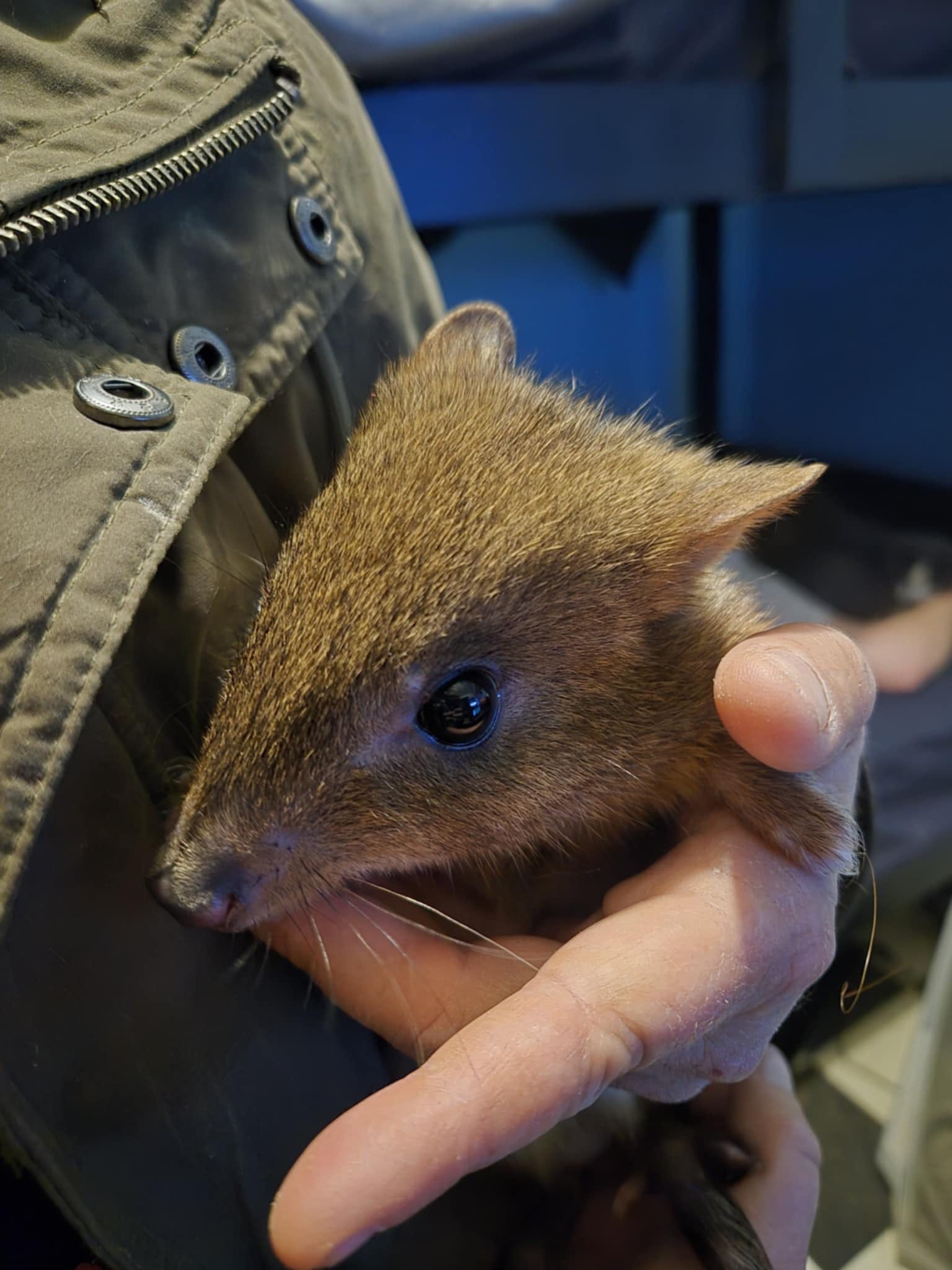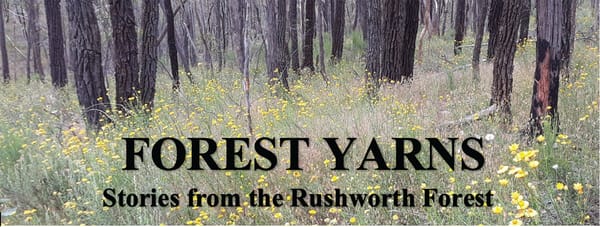Brush-tailed Bettongs

We are so accustomed to what we consider our ‘common’ species of wildlife in this area; flocks of corellas, cockatoos, galahs and rosellas, lorikeets and swallows, mobs of kangaroos feeding in paddocks and along roadsides. It is difficult for many people to imagine they may be initially in trouble when these critters are commonly seen as we traverse the countryside.

It’s even more difficult to believe that in another few decades, some of them may become rare, not common. This is not a new thing that humans have witnessed both here and in every other corner of the globe.
We recently acquired a very special critter on our education licence. His name is Bobby and he is a brush-tailed bettong. He made his first public appearance recently in Tatura at the Goulburn Valley Tree Group Nursery alongside Goulburn Murray Landcare Group for an open day promoting wildlife and habitat awareness in our own backyards. Bobby is a confident little macropod and was quite happy meeting people and is a great representative of a species which was once prevalent and considerably widespread on Australia’s mainland.
Sadly, these small kangaroo-like critters have faced nothing but catastrophic population crashes since Europeans first set foot on Australian soil. By 1920, they were already extinct in the state of Victoria where they once thrived. Bettongs once roamed in over sixty percent of the mainland country and are now one of the most highly endangered species in Australia with only three remnant populations in south western South Australia and they now occupy only one percent of their original range. Conservation efforts since the 1970’s entailing fox and feral cat eradication using baiting in the areas where remaining populations existed and reintroducing brush-tailed bettongs to at least forty-six sites in South Australia, Western Australia and NSW, has seen populations rise from the dismal numbers they’d plummeted to after European settlement. Reintroductions to the wild has seen mixed results though with some being successful while others have not.
The drivers of the bettong’s destruction have been habitat loss due to land clearing and burning practices as well as introduced predators like the red fox and cats. The brush-tailed bettong is believed to have two subspecies, an eastern subspecies which is now considered extinct and the western form which is also known as the woylie. Bettongs are a macropod in the same family as potoroos and are also known as rat-kangaroos. They sport a long, prehensile tail with a black, bushy tip. They forage on fungi, seeds, leaf material, seasonal roots, tubers, berries and invertebrates. They have been observed caching food, usually seeds, by burying them for later consumption and carrying nesting material with their prehensile tail.
Woylies are predominantly nocturnal, resting in constructed nests during the day, coming out to forage at dawn, dusk and during the night. These nests are made from leaves, grasses and bark, are dome shaped and are usually well camouflaged inside hollow logs, in dense vegetation, abandoned burrows or under fallen trees in shallow scrapes. They can breed all year round but only have one young at a time with twins being rare. They can have up to three young per year. Being a marsupial, they carry their young in a pouch, then as the babe grows, it will follow mum at foot. Most of the places where reintroduction has worked are fenced wildlife sanctuary areas where introduced predators are eradicated or kept at a low level as well as the habitat being protected and intact.
I think the historical records of the conservation efforts of a critter who almost became extinct is both an example and warning of how fenced wildlife protection zones maybe a short stop for propping up a species on the threshold of extinction which is invaluable as a first step to build up ‘wild’ populations but they are just that, a short stop.
Research initially showed positive results for the woylie populations which were reintroduced into predator free fenced areas but after a boom in numbers over roughly a thirty year period, populations have been steadily crashing, even within these fenced areas. This suggests that the carrying capacity of fenced areas was reached then declined due to the amount of resources present.
Just like many of our Australian species, woylies appear to be naturally cyclical in their boom- and-bust population dynamics. They need to build up populations quite quickly so the numbers are there to survive as a species when times are less plentiful.
Influencing factors in species like this can be largely influenced by periods of drought or wet, which in turn drive the habitat conditions around them. Fenced areas are managed by humans. As an example, Western grey kangaroos built up to high numbers in one fenced area so had to be culled so as not to out-compete the woylies for resources.
The problem with predator proof fenced areas is that not only are native animals who cannot get through, over or under the fence are blocked from entering, they are also trapped inside. This alters the entire dynamics of wild populations when they are in effect land locked in or excluded, this can include natural predators.
While predator proof fencing is holding up species from disappearing altogether, we really need to be doing more work on the ground in preserving, enhancing and creating more natural habitat everywhere if we don’t want to have to visit a fenced area just to see these endangered species in the wild. We need to be doing more eradication of introduced predators such as cats and foxes in the form of both trapping and shooting.
Our wild landscapes were never managed before First Nations people and Europeans began to call Australia home. We are attempting to manage nature in an effort to slow the decline of many plants and animals. Nature in itself is dynamic, ever shifting, a ceaseless battle of balance between all flora and fauna species. While doing what we can to protect a dwindling species we must also see some of these efforts as a stop-gap while we continue to do conservation work in our own backyards - or I fear it will all be in vain.




